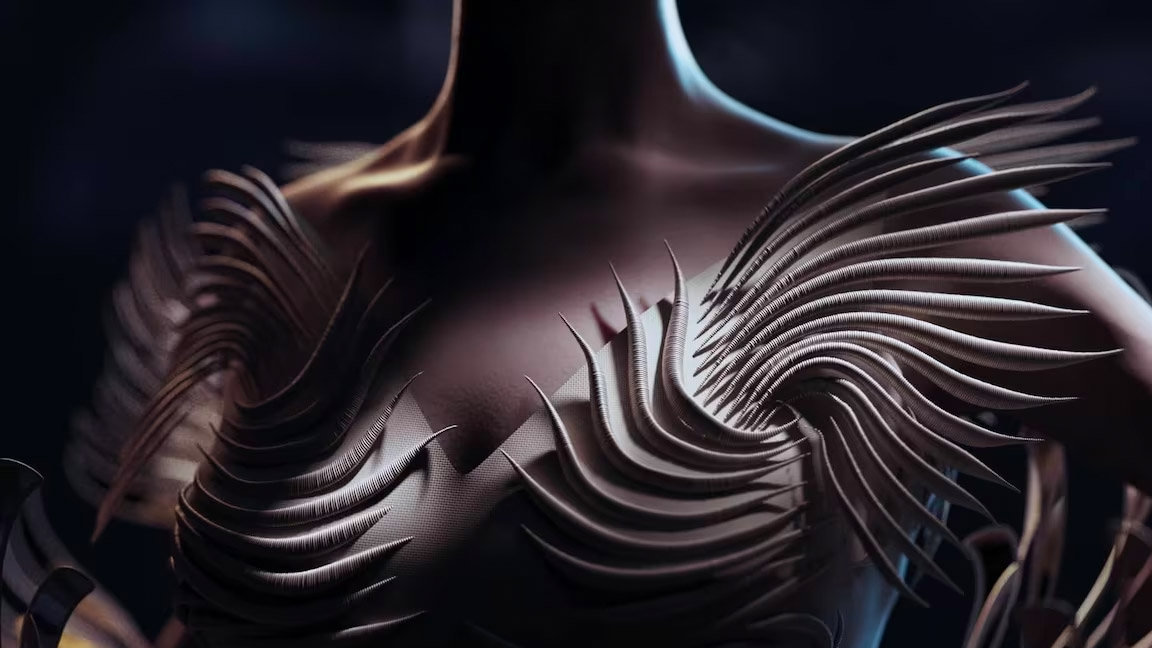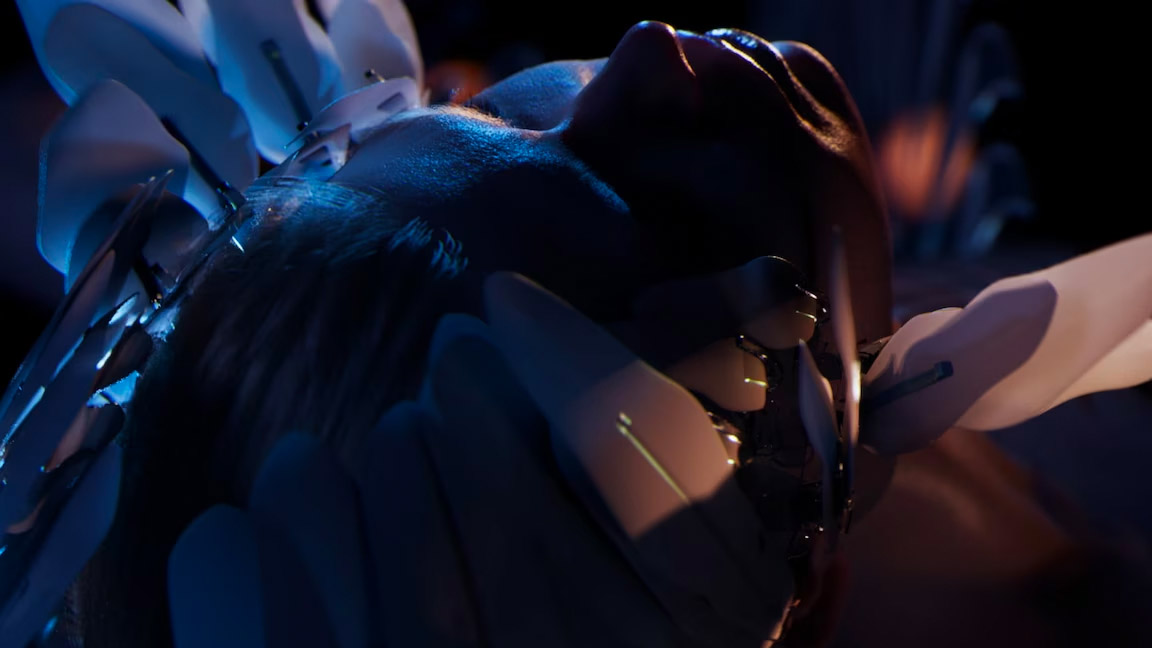Is Unreal Engine the future of filmmaking?

Unreal Engine, a real-time 3D creation platform developed by Epic Games, designed for video game development, is now transforming the way films and animations are made.
To discover how and why Unreal Engine can impact the film industry I met director Tim Richardson, the filmmaker, whose work includes projects for Billie Eilish, Givenchy and Nike. He won plaudits for the short movie Neon Rapture, a sci-fi animation created in collaboration with with fashion designer Iris van Herpen and created using Unreal Engine.
With its powerful capabilities and flexibility, Unreal Engine has become a go-to tool for filmmakers looking to push creative boundaries and bring their imaginative visions to life. As videogame graphics and movie VFX converge Unreal Engine is primed to enable all creatives to bring their visions to life, including making movies.

For Tim Richardson, Neon Rapture marked his first venture into using Unreal Engine. Coming from a more traditional linear filmmaking background, he initially had to familiarise himself with the intricacies of this real-time 3D engine.
"It was a real deep dive," he tells me. "I really got involved in it from a perspective of how the engine actually operates as a visualisation tool, and it was quite helpful for me because working in real time made things more dynamic."
As we chat, he acknowledges that there are unique strengths in using Unreal Engine that are absent in linear visual effects pipelines, such as the ability to quickly visualise scenes, frame shots and experiment with the film's "world" before committing to filming.
This flexibility enables filmmakers to delve into dynamic storytelling in a more cost-effective and engaging way. However, Tim Richardson also recognises that the transition from traditional pipelines to working with Unreal Engine required a learning curve. He admits that "not coming from a gaming background, it definitely took me a while to understand how to use it to its best advantage" and credits the support he received from the Epic Games team, who helped him whenever needed.
Daily design news, reviews, how-tos and more, as picked by the editors.

Richardson wanted to achieve a level of fidelity and immersion in Neon Rapture that hadn't been done before, creating a cinematic world that would represent the inspiration behind the clothing. He explains, "I wanted to use it for its strengths, to test it and place the game engine in a space where it's considered equal to traditional cinematography, filmmaking or photography."
By pushing the boundaries and showcasing the possibilities of Unreal Engine to make Neon Rapture, Richardson aimed to challenge preconceived notions and demonstrate the engine's potential in the fashion and filmmaking industries.
Epic's goal, basically, is to get all the visual effects companies that make traditional work to develop an Unreal Engine pipeline.
Tim Richardson
Unreal Engine finds its place in the filmmaking process as a versatile tool with various applications. It serves as a visualisation tool that aids in blocking scenes, framing shots, and assembling environments rapidly. It has alread been utilised extensively in the film industry as a pre-visualisation tool and a VFX platform, for TV series such as Disney's The Mandalorian, enabling filmmakers to create virtual sets, simulate camera movements, and experiment with different visual effects.
Additionally, Unreal Engine has been used to create game cinematics and even entire CG animations, such as episodes of Netflix's Love, Death & Robots. Richardson explains, "Unreal Engine's versatility and integration with other software, such as Houdini and Maya, provide a seamless workflow for filmmakers".
While Unreal Engine offers a wide range of possibilities, Richardson acknowledges that it is not a one-size-fits-all solution. Filmmaking in Unreal Engine still "requires a hybrid approach, incorporating different platforms and tools. The engine excels in certain areas, such as environment design and quickly assembling rough scenes". He adds: "Its key advantage is real-time visualisation. Being able to review a scene – fully lit – during the ideation process is invaluable."

Richardson emphasises that while Unreal Engine continues to improve with each iteration, making a narrative film solely within Unreal Engine is still a challenge. However, he sees great potential in using Unreal Engine to produce narrative films and tells me there are many "layers to Unreal Engine" and how it can connect with other software.
"Unreal Engine is an incredible catalyst for world building," says Richardson as he considers how it can be used in the future. "When creating high-end character assets, I can easily explore the story on other platforms like AR and VR as well."
Unreal Engine is an incredible catalyst for world building
Tim Richardson
Funding is an essential aspect of any film production, and the same holds true for films created using Unreal Engine. Richardson acknowledges that obtaining funding for projects like Neon Rapture can be a challenge, particularly when aiming for high-end productions. So can creating projects in Unreal Engine help secure funding?
Richardson tells me that the pitching process varies depending on who is presenting the project, however, he believes that Unreal Engine can be a valuable tool for independent artists and directors to pitch their ideas effectively. While a director might rely on visual treatments or scripts, a stage of development Richardson loves, an Unreal Engine artist or director can also use the tools to create compelling and immersive presentations.
As we chat he points out that the Unreal Engine's real-time capabilities and sophisticated features make it an ideal platform for crafting engaging pitches and capturing investors' attention.

This aspect of using Unreal Engine to pitch a film or, in particular, speed up production is, according to Richardson, one of the significant advantages of the platform. "I think it's a democratised system," he says, explaining how in a traditional pipeline one person will do their role and then the next, and you can't, generally, go back.
Traditionally, these teams can also become large, he says. "There's a texture team, and then there's a modelling team, and then you've got all these different people on each of those, each of those teams breaks down to a little team of its own… So it gets really big really quickly and less flexible. "In Unreal Engine you can actually go back and reshoot a scene very quickly because it's all in real-time."
It shouldn't be underestimated how the next generation of filmmakers, who have grown up on Minecraft and Fortnite, and now Unreal Editor in Fortnite, are used to the kind of speed real time engines like Unreal offer. It's a stage of industry development that Richardson is excited to see happen.
"I think if you're young and you're raised on [real time engines] you have an incredible advantage," he shares, as our conversation comes to an end. "The engine gives people the opportunity to create more dynamically and quickly with smaller teams. What one person can do in a week now would normally take a team six weeks in traditional pipelines."

Ian Dean is Editor, Digital Arts & 3D at Creative Bloq, and the former editor of many leading magazines. These titles included ImagineFX, 3D World and video game titles Play and Official PlayStation Magazine. Ian launched Xbox magazine X360 and edited PlayStation World. For Creative Bloq, Ian combines his experiences to bring the latest news on digital art, VFX and video games and tech, and in his spare time he doodles in Procreate, ArtRage, and Rebelle while finding time to play Xbox and PS5.
